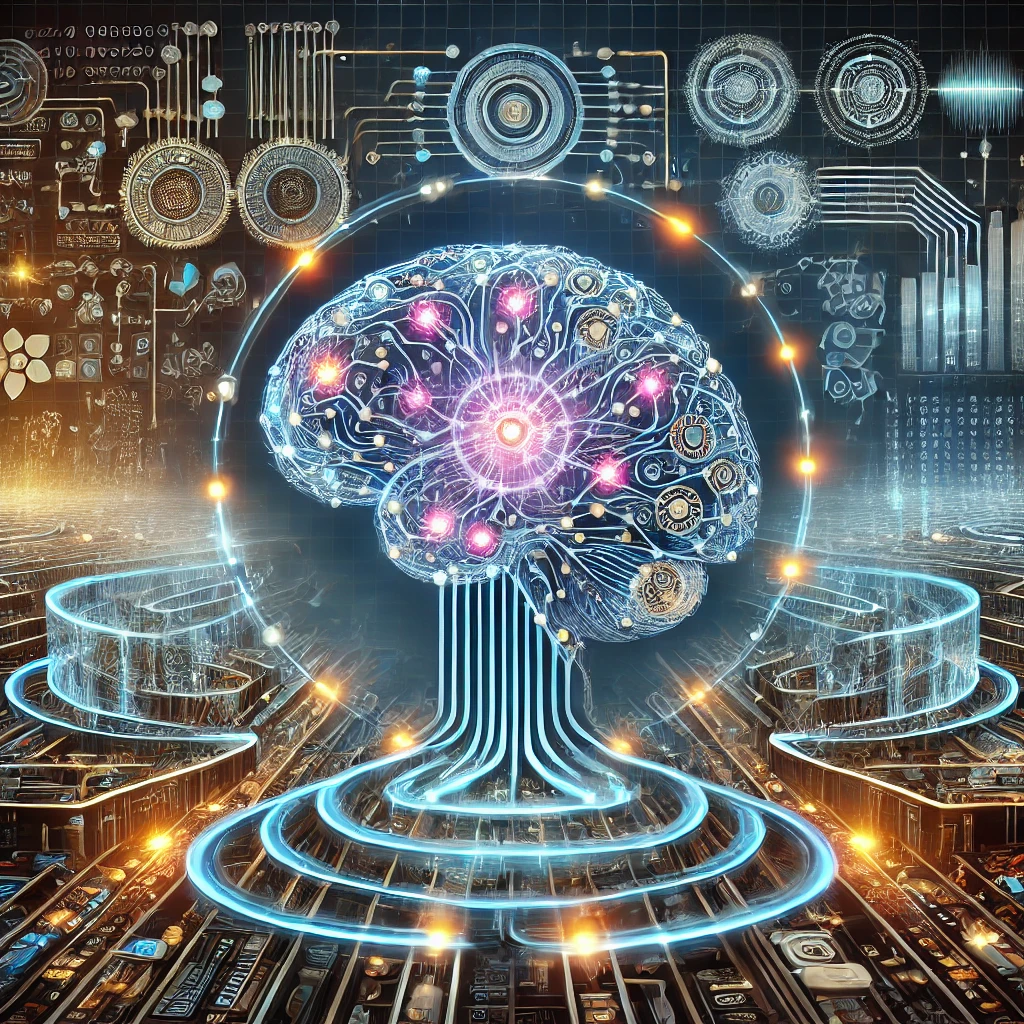What is a Recurrent Neural Network (RNN)?
A Recurrent Neural Network (RNN) is a type of artificial neural network used in machine learning and artificial intelligence (AI) to process data that comes in sequences. Unlike traditional neural networks, which only process inputs independently, RNNs can remember information from previous inputs and use it to influence future outputs. This makes them especially good at handling tasks where the order or sequence of data matters, such as in language translation, speech recognition, and time series prediction.
The key feature of an RNN is its “memory”—it keeps track of information over time by looping back its previous outputs into itself. This allows RNNs to “remember” what they’ve seen before, which is essential when working with data that has a temporal or sequential nature (like a sentence where each word depends on the one before it).
How Does an RNN Work?
In a regular neural network, each input is treated independently. For example, if you were processing words, the network would look at each word in isolation, not taking into account the context provided by the previous words. This doesn’t work well for many tasks because, in real life, context is important.
RNNs solve this by creating connections between their layers that allow them to use information from past inputs to help with future inputs. When the RNN receives a new piece of data (for instance, a word in a sentence), it considers both that data and the information it learned from the previous step, giving it a “memory” of the sequence. This looping structure, where outputs are fed back into the network, gives RNNs their ability to handle sequential data effectively.
Applications of RNNs in AI
RNNs have been used in many areas of artificial intelligence, particularly where understanding sequences of data is important. Some key applications include:
-
Natural Language Processing (NLP)
RNNs are widely used in natural language processing, which includes tasks like translating languages, generating text, and speech recognition. For example, in a language translation task, an RNN can process entire sentences instead of translating word-by-word, allowing it to capture the context of the sentence and generate more accurate translations. -
Speech Recognition
In speech recognition systems (like Siri or Google Assistant), RNNs help process spoken language by remembering the sequence of sounds and words. This helps the system better understand what is being said, even if there are pauses, accents, or variations in tone. -
Predicting Stock Prices or Weather
RNNs are also useful in predicting time-based data, such as stock prices or weather patterns. By analyzing past data, the RNN can learn patterns and trends, which it uses to predict future events. In finance, RNNs can help analyze trends in stock markets, while in meteorology, they can be used to improve weather forecasting models. -
Generating Music or Text
Another exciting use of RNNs is generating new content. For example, an RNN can be trained on large amounts of text data to generate sentences, articles, or even entire stories that mimic the style of the original data. Similarly, RNNs can generate music by learning from sequences of notes and rhythms, creating original compositions.
Challenges with RNNs
While RNNs are powerful, they do have some limitations. One of the biggest challenges is known as the vanishing gradient problem, which means that as the network tries to remember information from too far back in the sequence, it becomes harder for the RNN to learn. This can limit the RNN’s ability to effectively use long-term memory, especially when dealing with very long sequences.
To address this, more advanced versions of RNNs, like Long Short-Term Memory (LSTM) networks and Gated Recurrent Units (GRU), have been developed. These models are designed to improve the network’s ability to remember important information over longer periods, making them more effective in complex tasks like language translation or music generation.
Conclusion
Recurrent Neural Networks (RNNs) are a powerful tool in the field of artificial intelligence, designed to process data that comes in sequences. Their ability to “remember” previous inputs makes them ideal for tasks like language translation, speech recognition, and time series prediction. While they have some limitations, advances like LSTMs and GRUs have helped overcome these challenges, enabling RNNs to be used in an even wider range of applications. As AI continues to evolve, RNNs will likely remain an important technology for tasks involving sequential data.
